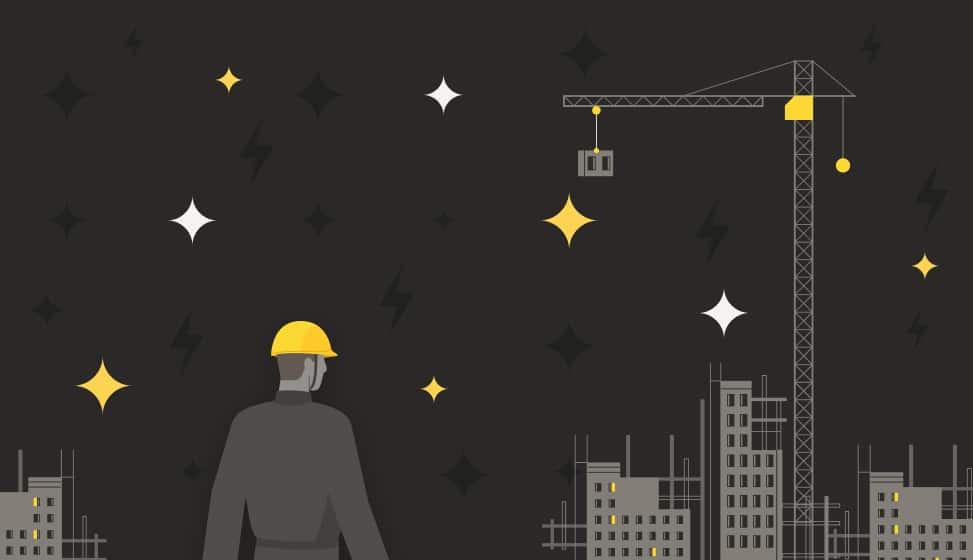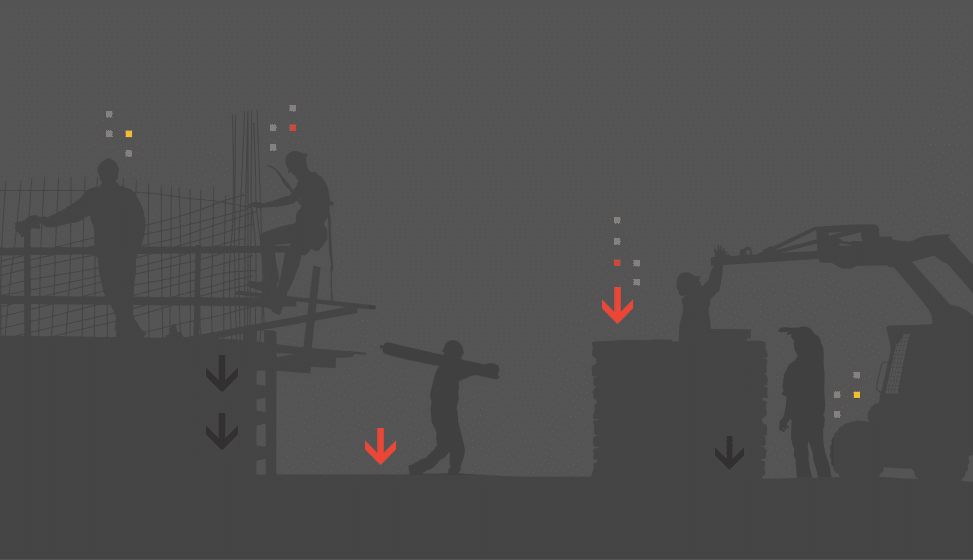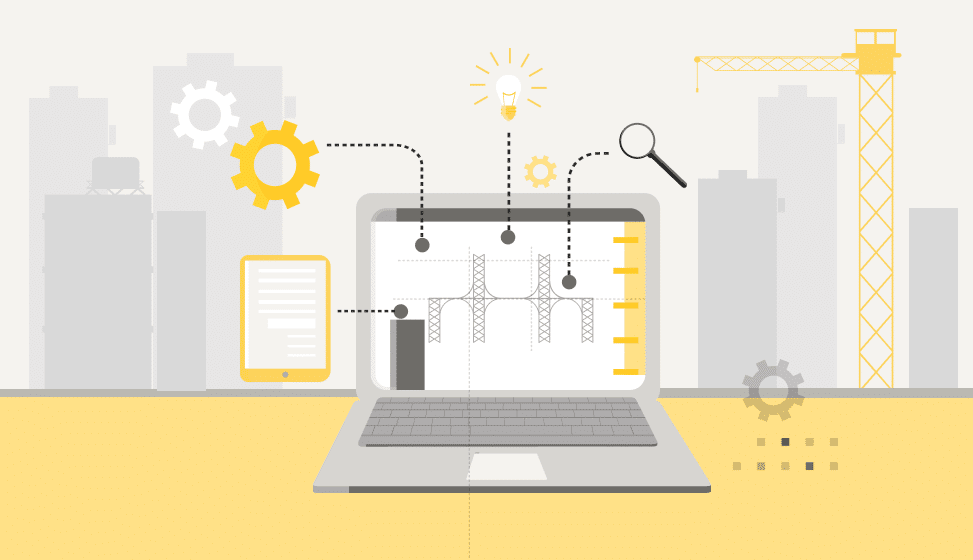From drones to data: How we’re transforming underground utility tracking
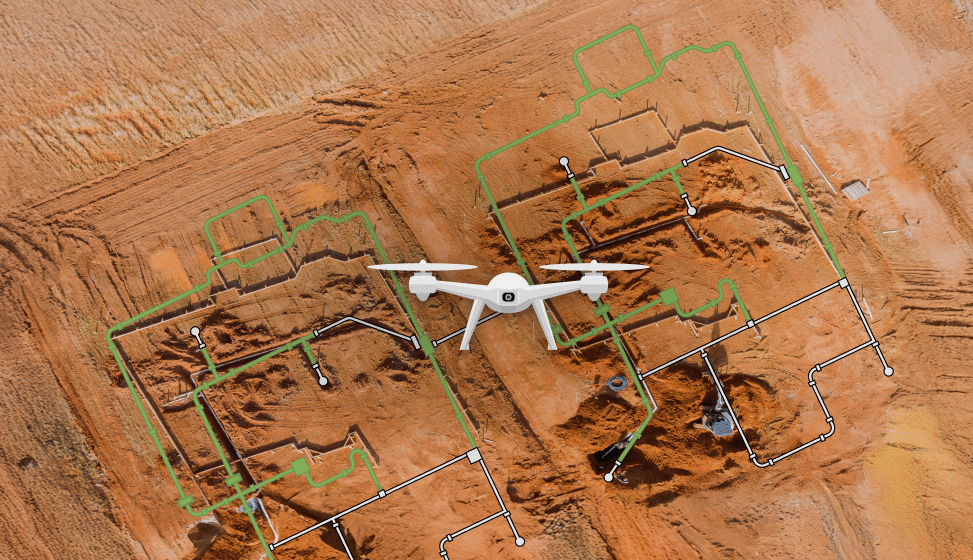
This feature was officially announced on October 23, 2025. You can read the full press release here.
The success or failure of large-scale construction projects is often defined by what happens underground right at the start of delivery, when utilities like drainage, power, telecoms, gas, and water are installed.
Tracking this crucial work has always been a challenge. Even with careful planning and site coordination, teams often depend on manual reports, marked-up drawings, and fragmented updates to understand what’s been installed and where. It’s a process that can be time-consuming, subjective, and prone to blind spots.
At Buildots, we’ve spent years helping teams get control of what happens above ground, turning site reality into structured data. But the earliest phases of construction have mainly remained hidden, until now…
From documentation to insight
Drones are now common on mega-projects like data centers, semiconductor fabs and EV battery plants. But the primary purpose of drone imagery is still site documentation.
We’ve always seen untapped potential in the images captured by those buzzing eyes in the sky. That belief is what led us to develop underground utility tracking – a way to turn those same drone captures into structured, actionable insights for teams.
By analyzing drone imagery against the project’s 3D model and schedule, Buildots can now automatically identify what’s been installed and how work is progressing. The result is a clear, objective view of progress. And because Buildots works with any processed drone captures, teams can keep using their existing drone providers while gaining a completely new layer of visibility and control.
Keeping to ambitious schedules
Given the ambitious timelines of mission critical projects, what matters most isn’t just knowing what’s been installed, but how quickly work is progressing. With underground utility tracking, teams can continuously monitor this pace. The Buildots platform flags potential delays (i.e. trades falling behind) before they affect downstream work, giving project leaders the time to make decisions that keep everything on track.
And because it’s all part of the same Buildots platform used for progress tracking in later project phases, there’s no need to juggle multiple systems or duplicate effort. It’s one unified source of truth, from the first trench to the final finishes. Having all that data in one place is especially valuable when investigating the root cause of delays during construction, or when reviewing the project holistically at the end as part of a lessons-learned analysis.
In action
Mortenson Construction was among the first to adopt Buildots’ underground utility tracking, putting it to work on a data center mega-project in the South Central United States, a site where underground utilities stretch across several square miles of open farmland. With so much ground to cover, the team faced a familiar challenge – they simply couldn’t be everywhere at once. Reaching different areas of the site took time, and without automation, progress tracking relied heavily on site walks and verbal updates.
To stay ahead, Mortenson needed a way to unify this information, avoiding the data gaps and lag that can delay risk identification and throw trade coordination off course. This is what it got with Buildots’ underground utility tracking.
Abbey Mumford, Operating Group Integrated Construction Director, it like this, “The true value of Buildots’ underground utility tracking lies in its ability to provide near real-time visibility into our progress and pace. This level of insight has become instrumental in how we manage the project. We're able to leverage the data in a variety of ways, from early decision-making to safeguarding downstream activities, which ultimately helps us maintain control and keep the entire project aligned and on schedule.”
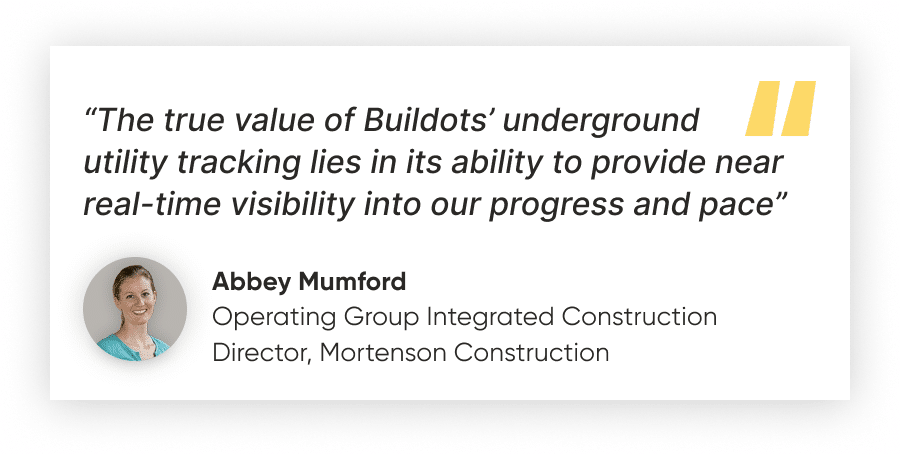
Underground utility tracking brings a new level of visibility and control to early-stage construction, especially on complex mega-projects. To see how it could support your next build, get in touch with our expert team.

